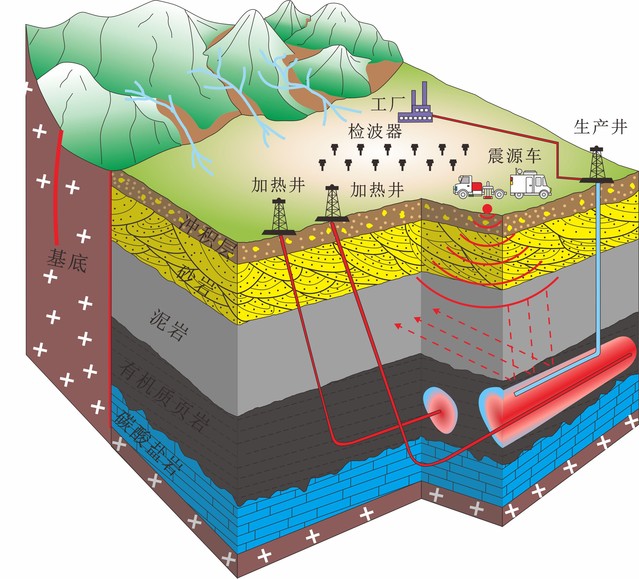Zhenjia Cai1,2 , Luanxiao Zhao1,2*, Jiqiang Ma1,2 , Fengshou Zhang3 & Jianghua Geng1,2
1 State Key Laboratory of Marine Geology, Tongji University, Shanghai 200092, China
2 School of Ocean and Earth Science, Tongji University, Shanghai 200092, China
3 Department of Geotechnical Engineering College of Civil Engineering, Tongji University, Shanghai 200092, China
* Corresponding author.
Email: zhaoluanxiao@tongji.edu.cn
Abstract
Research on the elastic responses of organic-rich shales during thermal evolution has predominantly focused on North American marine shales. However, the rock physics properties of lacustrine (continental) organic-rich shales with varying maturities, particularly under the unique geological conditions in China, have not yet been comprehensively explored. Therefore, characterizing the elastic properties of lacustrine organic-rich shales across various maturity stages is crucial for understanding their seismic rock physics responses and for enabling the identification of sweet spots in continental shale reservoirs using logging and seismic data, as well as facilitating geophysical monitoring of the in-situ conversion of oil shales. In this study, hydrous pyrolysis experiments were conducted on immature shales from the Chang 7 member of the Yanchang Formation in the Ordos Basin and the Jijuntun Formation in the Fushun Basin. Compressional and shear wave velocities, along with elastic anisotropy, were measured at various stages of thermal maturity to observe the evolution of the elastic properties. For the Chang 7 shale (compacted shale), both P- and S-wave velocities perpendicular to the bedding decreased significantly during the oil and gas generation stages, with the S-wave velocity perpendicular to the bedding decreasing by over 40%. Meanwhile, the elastic anisotropy increased significantly, likely because of microcracks formed by hydrocarbon expulsion from the bedding-parallel organic matter. In contrast, the Jijuntun Formation shale (cemented shale) exhibited an increase in both P- and S-wave velocities during the oil generation stage. This trend could be attributed to early-stage cementation, which suppressed microcrack for mation, while the increase in the elastic modulus of the organic matter became dominant. However, during the gas generation stage, both velocities decreased, while the anisotropy increased owing to the growth of organic pores and microcracks, which outweighed the structural support.

Figure. Schematic diagram of utilizing geophysics to guide shale oil and gas exploration and development and monitoring of in-situ subsurface extraction of onshore shale oils
Full Article: https://doi.org/10.1360/SSTe-2024-0045

